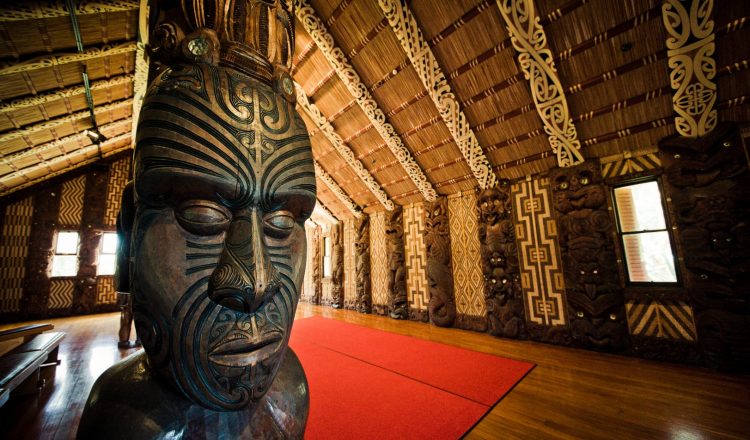マオリ料理
キーウィの料理は世界中の料理から影響を受けていますが、国内で最も古い料理の技術を開拓したのはマオリ族でした。マオリ族は伝統的に狩猟、採集、農耕、漁業を営んでおり、大地が自分たちに命を与え、家族やイウィ(部族)を養う手段を与えてくれると考えていました。この自然とのつながりは、マオリ族の料理には欠かせないものであり、ハンギと呼ばれる、食材を地中に埋める伝統的な調理法を用います。
ハンギ(Hangi)
マオリの食に対する文化は、ホスピタリティと共有の精神に基づいています。マオリの文化では、食べ物は儀式にも欠かせないものであり、彼らの料理へのアプローチは、大勢の人に食べてもらい、コミュニティをまとめることにあります。伝統的なハンギ料理では、食材を亜麻の葉で包んで熱を逃がさないようにします。そして、それを地面に掘った穴に熱した石を入れたピットオーブンに入れます。濡れた布で食材を覆い、その上に土をかぶせます。こうすることで、熱が逃げないようにし、美味しく食べられるようにするのです。ハンギの調理法は、通常3~4時間かかりますが、時間をかけた分、肉は柔らかく、野菜はジューシーで、スモーキーな土の香りが楽しめます。
カイ(Kai) – マオリの食べ物
マオリ族は、ハンギで調理する食材「Kai(カイ)」と呼ばれる食べ物を、自分たちの部族の土地や領地から調達していました。この方法で調理される代表的な食品は、魚、鳥類、サツマイモです。しかし、ヨーロッパの料理に触れてから、マオリ族は豚肉や羊肉、カボチャやキャベツなども伝統的な方法で調理するようになりました。クマラ(Kumara)は、マオリ族がニュージーランドで約1000年前から栽培しているサツマイモですが、ニュージーランドの原産ではなく、マオリ族が太平洋諸島から移住してきたときに持ち込んだものです。
レウェナパン(Rewena bread)もまた、現代でもマオリの人々に愛されています。これは、ジャガイモをベースにしたパンで、発酵させることで膨らみます。Rewena breadは普通のジャガイモやクマラを使うこともできます。甘酸っぱい味が特徴で、マオリのお祝いの席でハンギ料理と一緒に出されることが多いです。
マオリの人々は、周囲の環境から得られる食物とともに、そこにあるハーブを使って料理に甘味やスパイスを加えていました。また、ホロピート(horopito)などのハーブを薬として使用していました。
マオリ料理は現在も発展を続けており、新しいレシピや、ニュージーランドを構成する様々な文化との融合が行われています。

















































